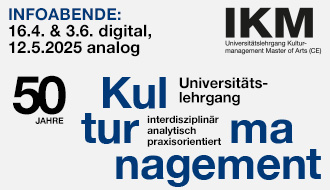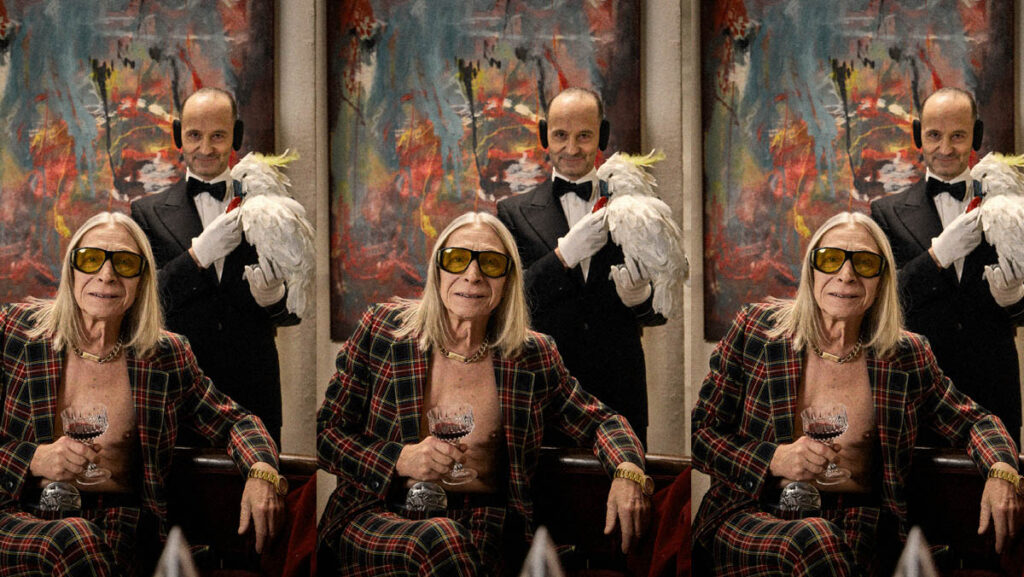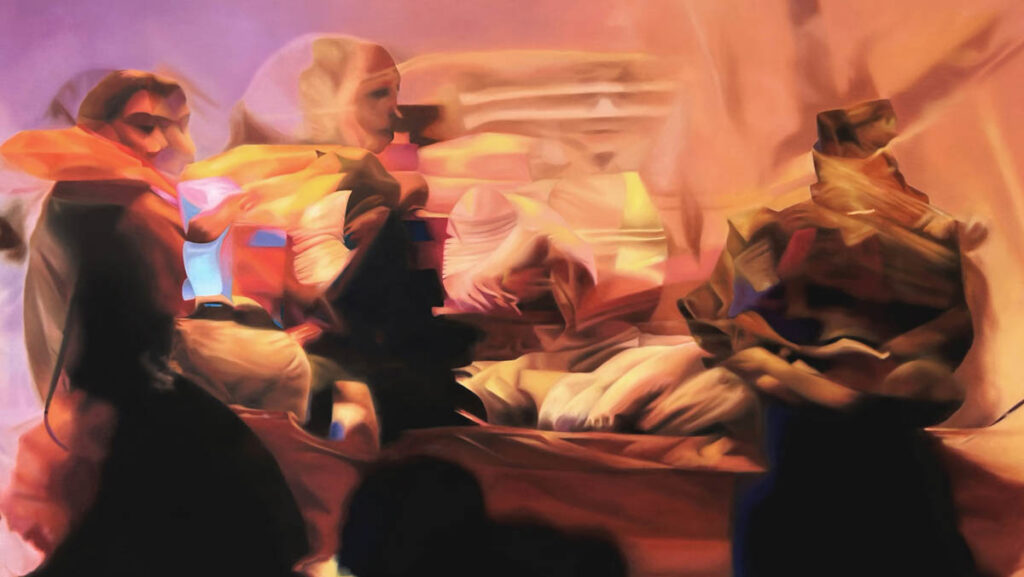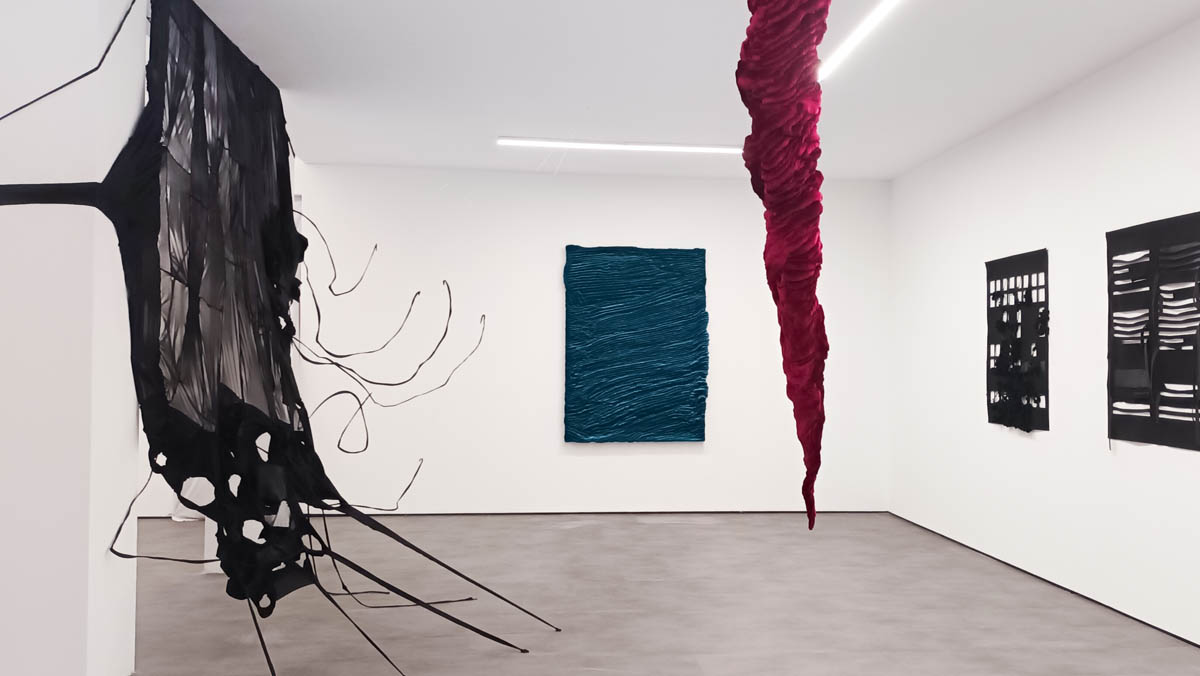
In 2023, her son, the current director Matteo Masciulli, started ARTRA Projects, a platform for young artists in Italy that also instigated Fuori da Dentro. I sat down with my new Italian friends Giulia, Filippo, and my co-curator Mengyin, to talk about what ARTRA Projects means to them*.
Season 2, Episode 1: A Conversation with Giulia Nelli, Filippo Moroni and Mengyin Wang.
An: Mengyin, how did you first get involved as a curator at ARTRA Projects?
Mengyin: My boyfriend, the artist Tao Han, and I used to visit the exhibitions at ARTRA Galleria. At an opening in 2022, we chatted with Matteo about how artists were chosen. I wanted to introduce Tao’s work but, at that time, Matteo told me that the roster of the gallery was quite set. A few months later, in 2023, Matteo reached out to me. He had a change of mind and wanted to start up a project with young artists. ARTRA Projects was born!
An: How did the artists get chosen to participate in ARTRA Projects? Was there a call?
Giulia: I participated in ARTRA Projects’ group exhibition ABECEDARIO, curated by Mengyin, together with Roberto Borghi at Spazio 21 in Lodi. After that, Matteo came to visit me in my studio. We slowly got to know each other and then he took my work to art fairs in Verona and Torino. And then he offered me this amazing opportunity to show my work together with that of Filippo at his gallery in Milan. I guess that he saw an affinity between our works – the use of textiles, the sense of poetry – but also some contrasts that could go well together in an exhibition.
An: And how about you, Filippo?
Filippo: Basically, I had been locked up in my studio for a year, a year and a half… okay, let’s make it two! When I came to Milan, I really wanted to enjoy its ambiance and get to know as many people as possible. One day, by chance, I got a message from Matteo saying that he would be pleased to drop by my studio. The meeting took place in my 20 square meter basement studio without windows, like a space of a serial killer (laughs). But Matteo came with his usual charm and he took time to look at my work. A mutual interest, a friendship, started.
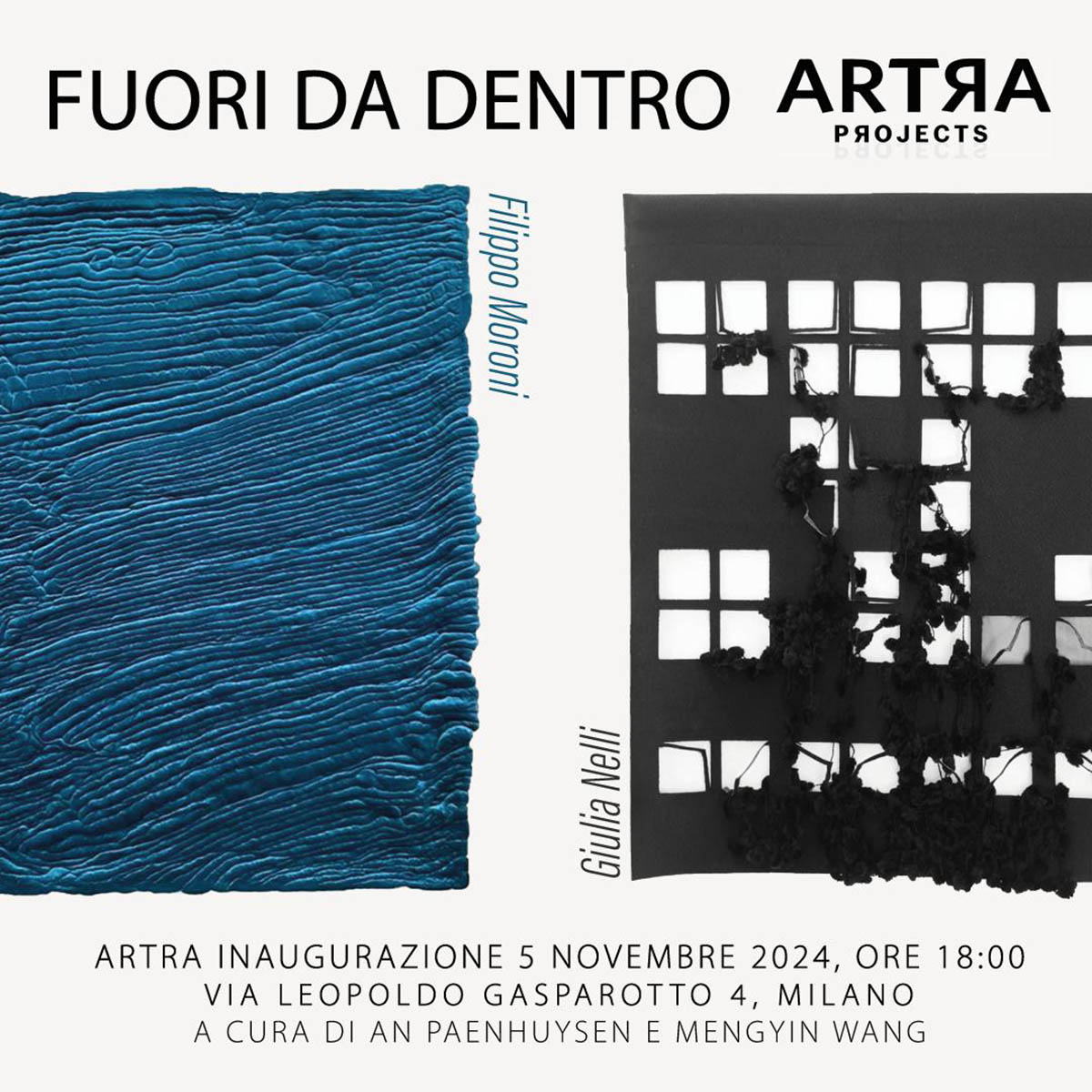
An: From the start, Mengyin, you were on board as a co-curator, both for the show in the gallery and group shows in other locations. Seems that ARTRA Projects is not only about young artists but also about young curators!
Mengyin: That’s true! It is not easy to make a career as a curator, especially as a foreigner in Italy. But Matteo said ‘Come on, since you are also a curator, you can co-curate’, first together with Roberto Borghi and Raffaele Quattrone and then, this time, with you, An. I was like, ‘Sure! Why not!’
An: You did curatorial studies in Milan. Did that open up a lot of opportunities for you?
Mengyin: I studied at NABA, the Nuova Accademia di Belle Arti in Milan, which is a wonderful school. After I graduated, I was thinking of opening up my own art space. Together with three friends, we put together some money to do so. We started decorating the place, but then Covid happened. The landlord still wanted us to pay rent, so we had to give up. At that time, I considered going back to China but as the tickets were super expensive, I had to stay in Italy!
An: Italy is not considered to be a country that supports very much its contemporary art scene. How is it for you, Filippo and Giulia?
Filippo: I believe Italy has a lot of potential that should be more fully utilized. Milan, while being the hub of contemporary art in Italy, could benefit from more openness to new opportunities and ambitions, which are more visible abroad. I come from Castiglione del Lago, in Umbria, where there are many artists, but fewer opportunities. However, I truly believe Italy has the resources to make a significant leap forward. It would be wonderful if artists could actively contribute to this change. So, in fact, that’s what I thought when Matteo proposed we do our exhibition in Milan. I wanted it to be a gift to the city that has welcomed and hosted me.
Giulia: Definitely. Milan is the most international of all Italian cities. To be able to have a studio in Milan is always seen as a great opportunity. It allows you to meet people from all kinds of disciplines, from design to fashion. Personally, something that I always dreamt of is early-20th century Paris, with its literary cafés and salons, where you could meet everyone and discuss. Now, we live in a more individualist time. That a group of young people, supported by a gallery, can meet – this idea enthuses me! In my experience, the arts lack a togetherness, a movement.
An: Did ARTRA Projects create a friendship between the seven artists that are involved?
Giulia: We’re still at the beginning but I think Matteo hopes that we continue to collaborate. He cares about that.
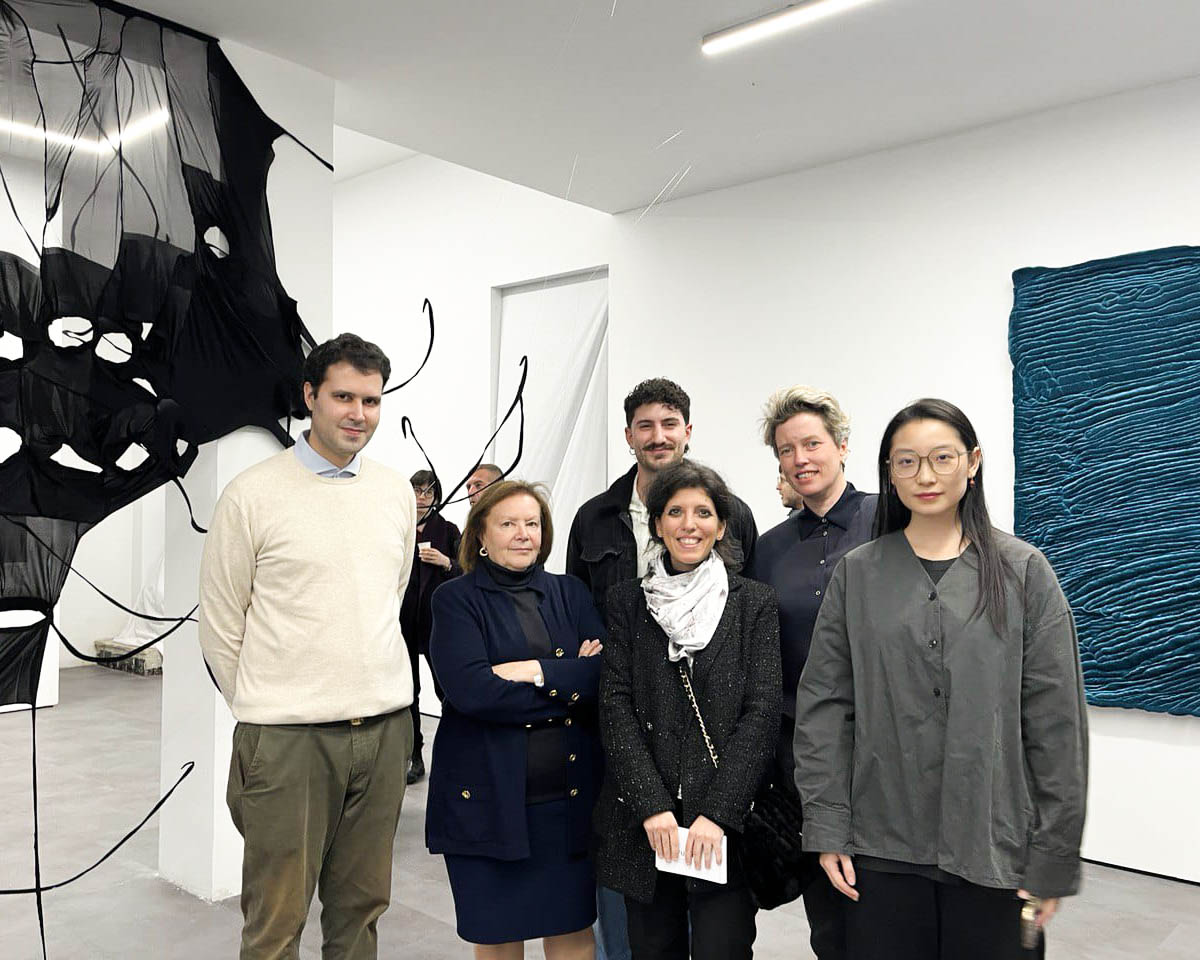
An: It‘s nice that the exhibition is not a one-off, but there is potential for the future.
Filippo: What intrigues me the most about this group is the chance to have a dialogue between artists who didn’t even know each other’s existence before. With some time, maybe we’ll manage to bring our works together, compare them, and who knows, discover we’re not as brilliant as we thought. And maybe, if we’re lucky, over time we can do the same with other artists. It’s actually something we should do much more often: take a moment, look at what we’ve created, give ourselves a pat on the back, and reflect on how to do something better… or at least hope we can.
An: Mengyin, you first studied painting in Florence and then came to Milan. Why did you decide to come here?
Mengyin: I wanted to be an artist. At school in China, we studied the Italian Renaissance. It was a dream to me! To be a painter in Italy! So I went to the Academy in Florence where I discovered that the system is totally different than in China. There is nobody who tells you what to do. You have to create your own research and find your own direction to grow. I felt lost. So I wondered, why did I want to become an artist? What is art? All these questions. I realised that I wanted to understand how the art world functions. There are artists but they can’t live by themselves. They need support. They have to enter the commercial world and make money too! So I wanted to research that. I discovered NABA and decided to come to Milan.
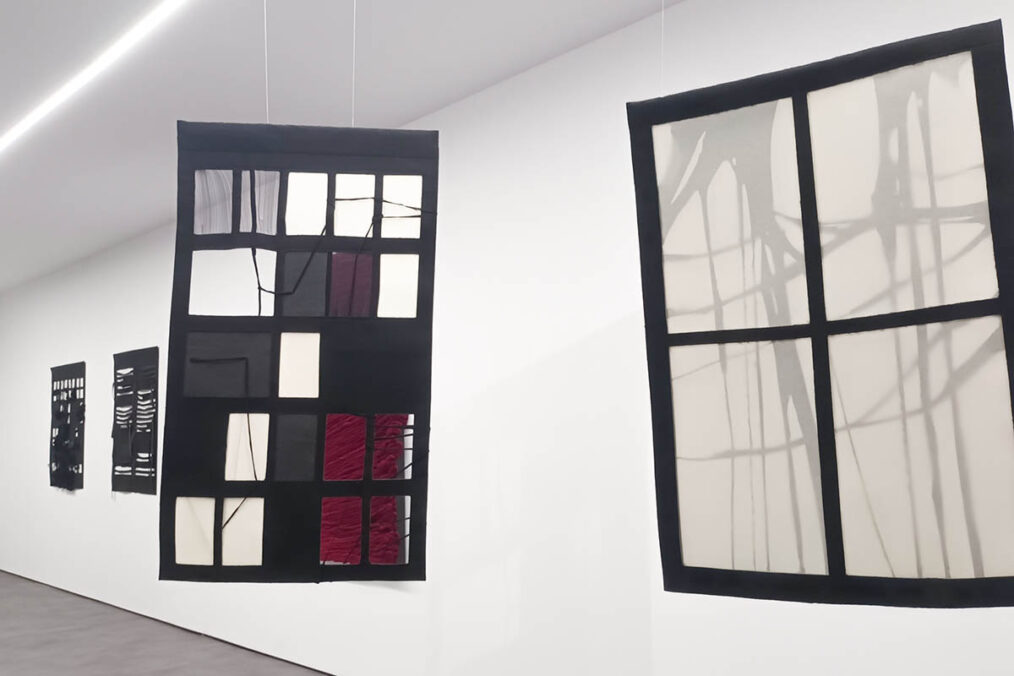
An: What did you notice about the Italian art scene?
Mengyin: What is hard about Italy, is also its positive characteristics. It is not direct or strict. You don’t have to follow a schedule. You can just say, “Ah, maybe I can do that” and then you try it out and it might work or not.(laughs).
An: At the moment, there is renewed interest in historical movements like Arte Povera and Fluxus, which had a strong support network in Italy. Do you think that this can lead to renewed interest in Italian contemporary art?
Filippo: I’m not sure, and to be honest, it’s not something that particularly concerns me. If there’s a renewed interest in Arte Povera or Fluxus, that’s great, but I prefer to focus on what I’m doing now and here. Of course, those movements had a huge impact, but I believe that Italian contemporary art needs to evolve independently, without feeling bound or defined by what has been. The important thing is to keep pushing forward, experimenting, and making art that is relevant today. I think that sooner or later, there will be a return to the know-how, to the value found in technical mastery and the ability to give tangible form to one’s vision. Just to give an example: I was completely captivated by a work I saw in 2017 at the Italian Pavilion at the Venice Biennale: Imitation of Christ by Roberto Cuoghi. That experience really got me into the research of material and into experimentation. There are so many artists, like Vinicio Berti and Pino Pinelli, Sterling Ruby and Mike Kelly who have given me something – or rather, I‘ve stolen something from them (laughs). But this return to the knowledge on how to do things, also technically, with the material, is something I find very important.
Giulia: In my opinion, the trend now, at least in Italy, is very figurative. There’s a lot of painting. I work in a more abstract and conceptual way. I am glad, however, to hear about the interest in Arte Povera, because as Filippo said, we use materials – and in my case, also reused materials. Although, I am more interested in a certain kind of elegance with the material. I don’t use trash material, but it is nevertheless re-elaborated and transformed. For me, it‘s important that artists can talk about what is happening in their time. It allows for a different understanding, one that involves the poetics of art. Talking about experimentation with materials, I love the work of Alberto Burri, a post-war Italian artist who experimented with quotidian materials such as tar, sand, wood, burlap and plastic, and so on. I was always fascinated by the lacerations or the ‘wounds’ in his work. Another artist is Emilio Scanavino, and his focus is on the sign and the flawed line.
An: To work in the arts is not easy. Why is that your motivation for working in the contemporary art world, Mengyin?
Mengyin: I guess I’m fascinated by a kind of constant change in art. Because it’s constantly happening and stretching. I’ve always said I’ve been defeated by art before (because I was lost in my creativity and couldn’t go on) but I now enjoy going around and meeting new artists and learning about their creations, and maybe that’s even more of a process of self-healing and answering of doubts for me.
*After a few years of study, I was able to conduct this conversation in my best Italian. It was translated into English by yours truly, so if anything has been lost in between, let‘s call it Inglish.
The exhibition FUORI DA DENTRO is on view at ARTRA Gallery until December 20th.

About the Series: Curating, writing, and teaching takes An Paenhuysen to many places across the art world, but lately she has been working towards living and working between Berlin and Italy. In November 2024 she became the director of The Boxing Gallery in Milan, an art space under the auspices of the Fondazione Arthur Cravan, dedicated to happenings in the spirit of the dadaist, boxer, and poet Arthur Cravan. In this second season of interviews, An invites you to experience conversations with some of the interesting people and initiatives she encounters on her journeys through the Italian art scene, like young Italians or an art foundation that is more than real.



